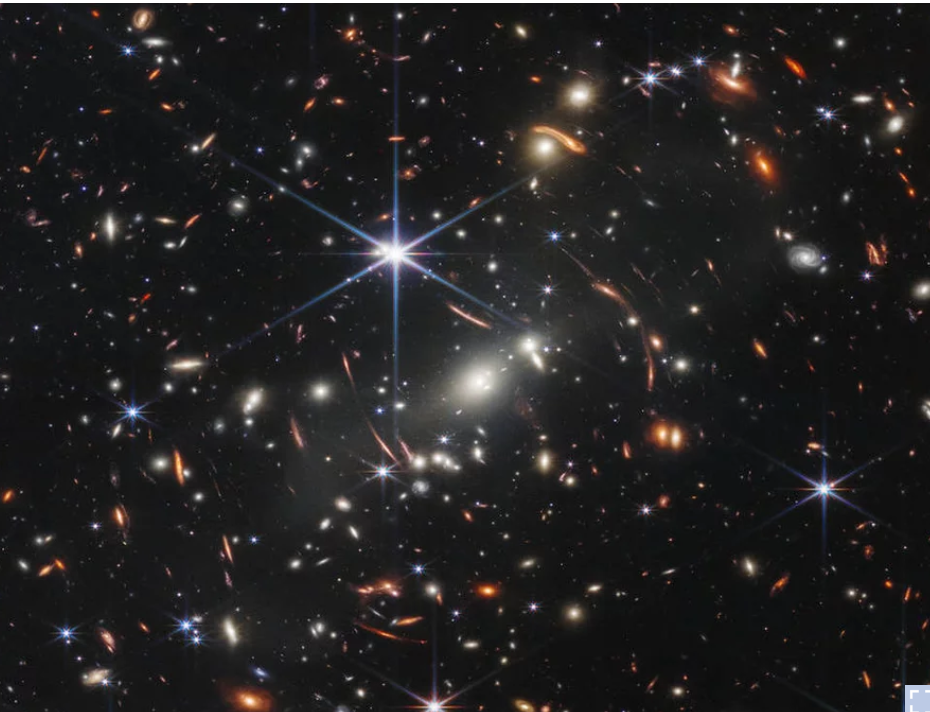(NASA) An international team of astronomers has used data from NASA’s James Webb Space Telescope to report the discovery of the earliest galaxies confirmed to date. The light from these galaxies has taken more than 13.4 billion years to reach us, as these galaxies date back to less than 400 million years after the big bang, when the universe was only 2% of its current age.
Earlier data from Webb had provided candidates for such infant galaxies. Now, these targets have been confirmed by obtaining spectroscopic observations, revealing characteristic and distinctive patterns in the fingerprints of light coming from these incredibly faint galaxies.
“It was crucial to prove that these galaxies do, indeed, inhabit the early universe. It’s very possible for closer galaxies to masquerade as very distant galaxies,” said astronomer and co-author Emma Curtis-Lake from the University of Hertfordshire in the United Kingdom. “Seeing the spectrum revealed as we hoped, confirming these galaxies as being at the true edge of our view, some further away than Hubble could see. It is a tremendously exciting achievement for the mission.”
The observations resulted from a collaboration of scientists who led the development of two of the instruments aboard Webb, the Near-Infrared Camera (NIRCam) and the Near-Infrared Spectrograph (NIRSpec).
The investigation of the faintest and earliest galaxies was the leading motivation behind the concepts for these instruments. In 2015, the instrument teams joined to propose the JWST Advanced Deep Extragalactic Survey (JADES), an ambitious program that has been allocated just over one month of the telescope’s time spread over two years, and is designed to provide a view of the early universe unprecedented in depth and detail.
JADES is an international collaboration of more than 80 astronomers from 10 countries. “These results are the culmination of why the NIRCam and NIRSpec teams joined together to execute this observing program,” said co-author Marcia Rieke, NIRCam principal investigator, of the University of Arizona in Tucson.
The first round of JADES observations focused on the area in and around the Hubble Space Telescope’s Ultra Deep Field. For over 20 years, this small patch of sky has been the target of nearly all large telescopes, building an exceptionally sensitive data set spanning the full electromagnetic spectrum. Now, Webb is adding its unique view, providing the faintest and sharpest images yet obtained.
The JADES program began with NIRCam, using over 10 days of mission time to observe the field in nine infrared colours, and producing exquisite images of the sky. The region is 15 times larger than the deepest infrared images produced by the Hubble Space Telescope, yet is even deeper and sharper at these wavelengths. The image is only the size of a human viewed from a mile (1.6 km) away. However, it teems with nearly 100,000 galaxies, each caught at some moment in their history, billions of years in the past.
“For the first time, we have discovered galaxies only 350 million years after the big bang, and we can be absolutely confident of their fantastic distances,” shared co-author Brant Robertson from the University of California, Santa Cruz, a member of the NIRCam science team. “To find these early galaxies in such stunningly beautiful images is a special experience.”
https://phys.org/news/2022-12-nasa-webb-milestone-quest-distant.html


